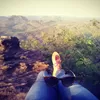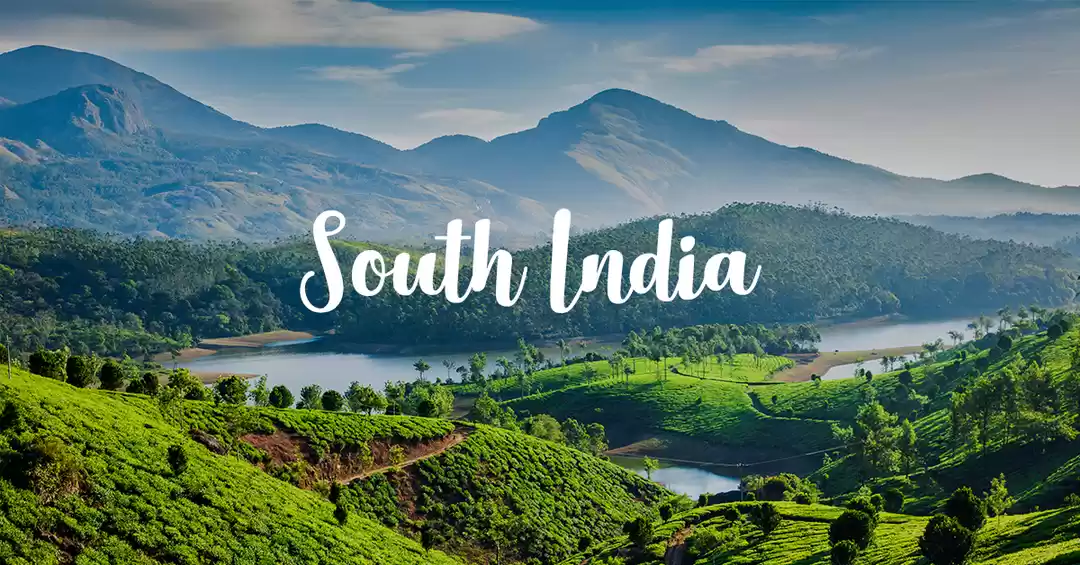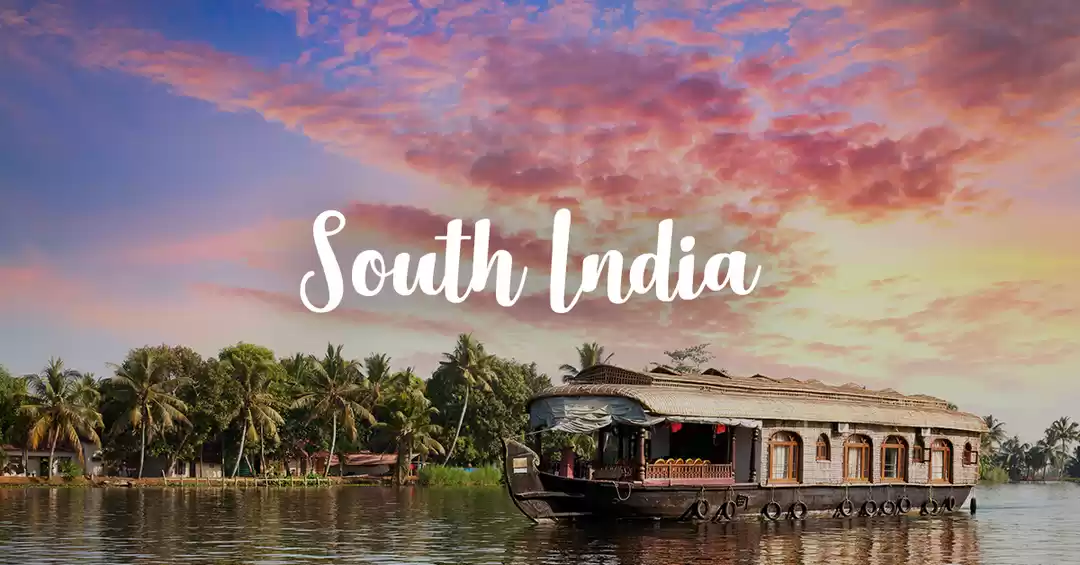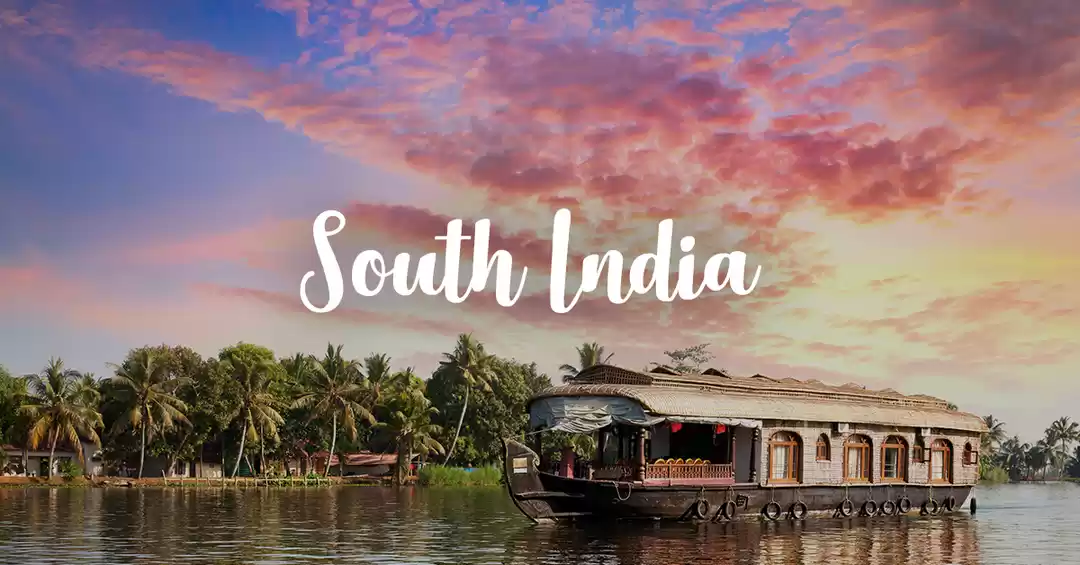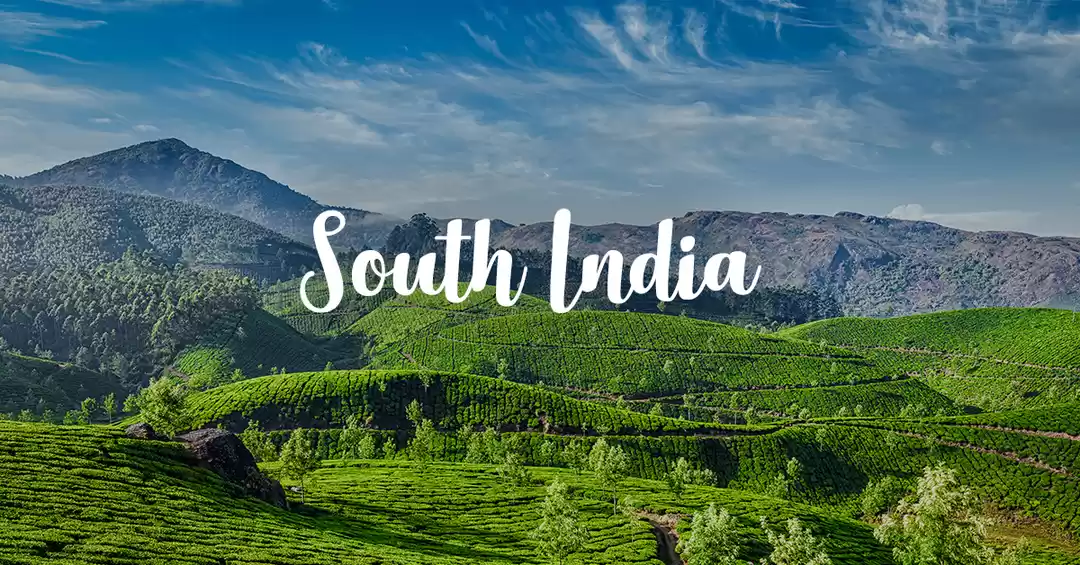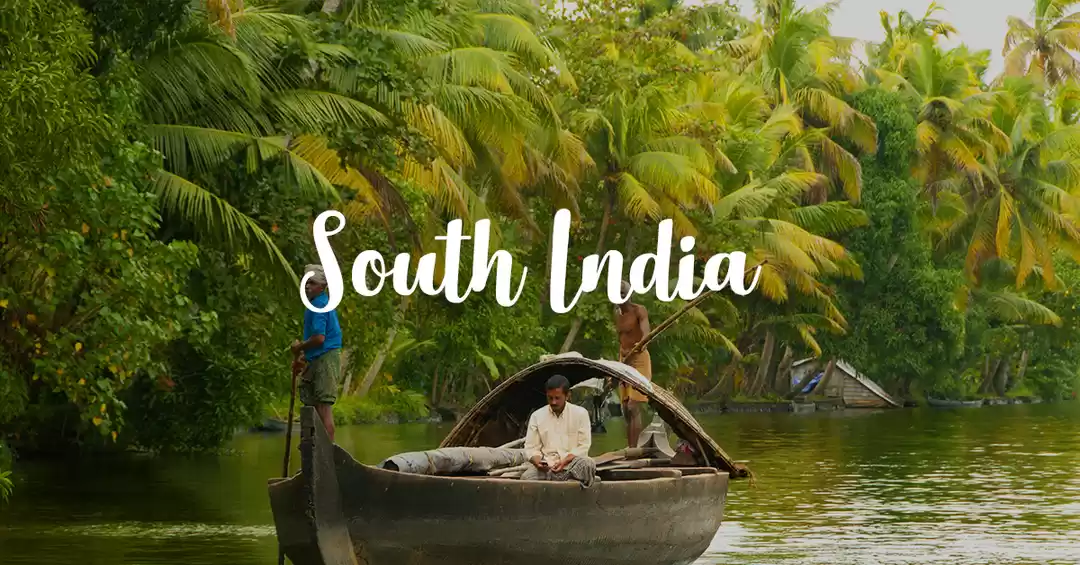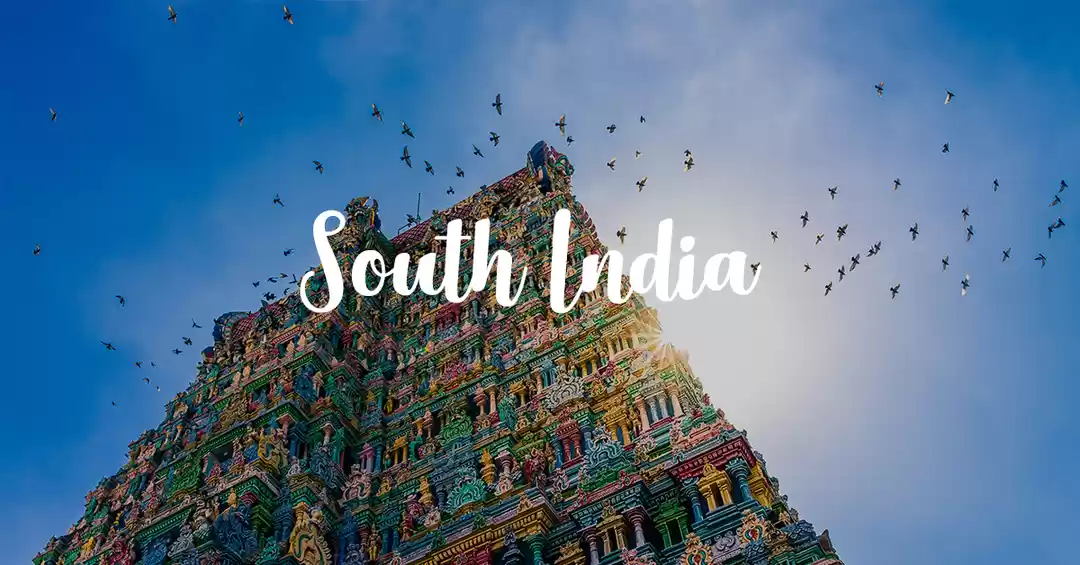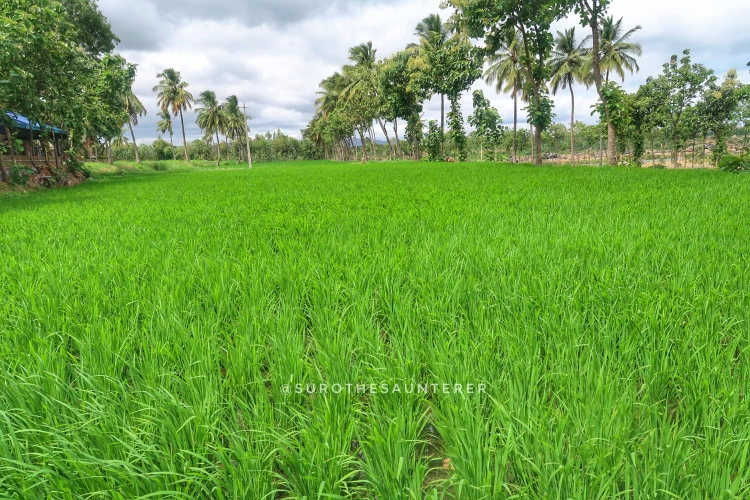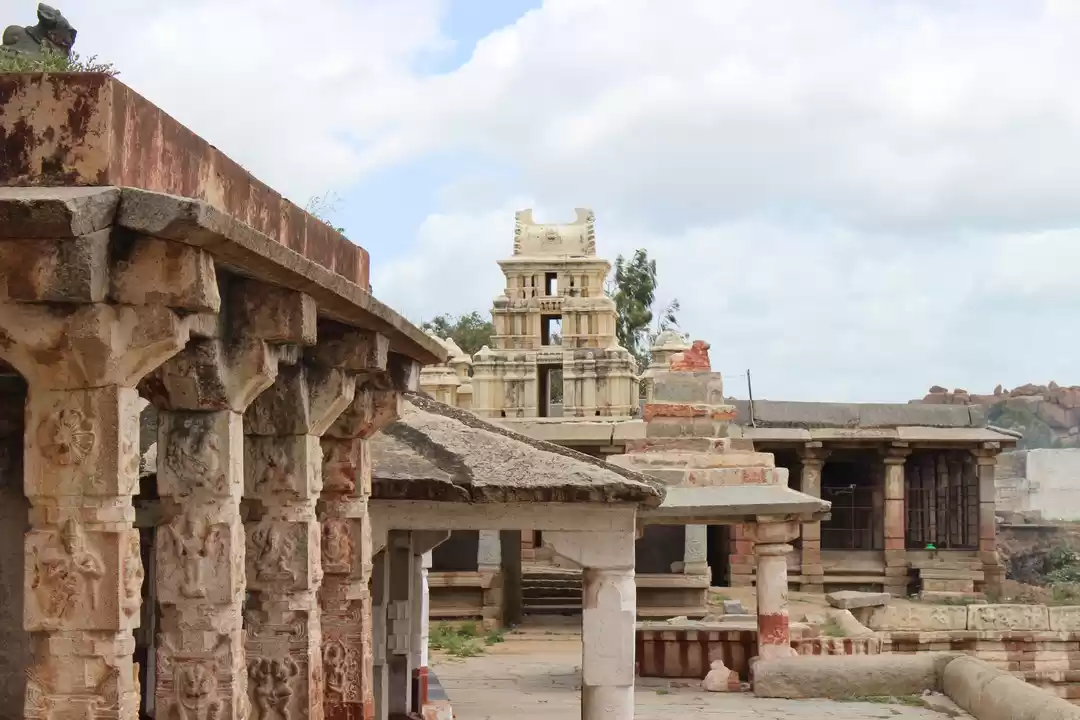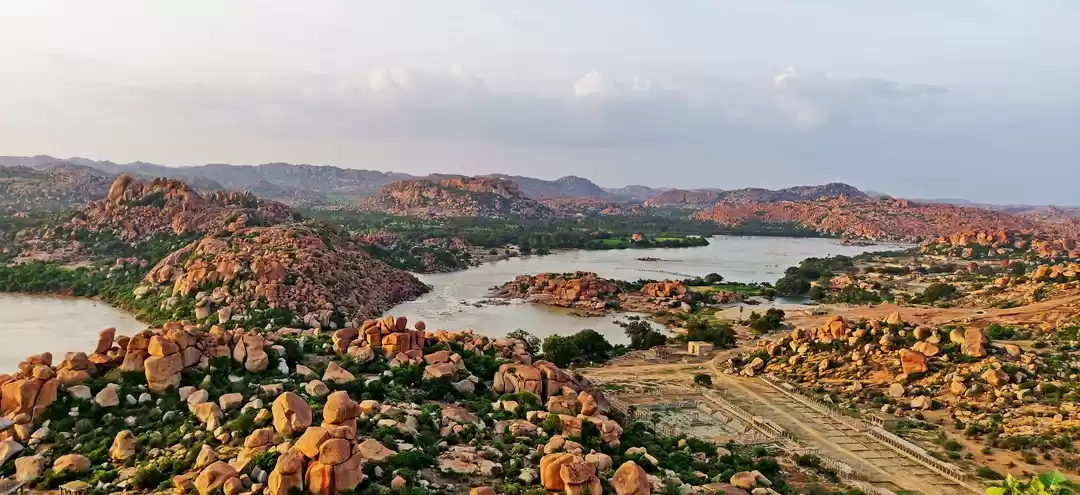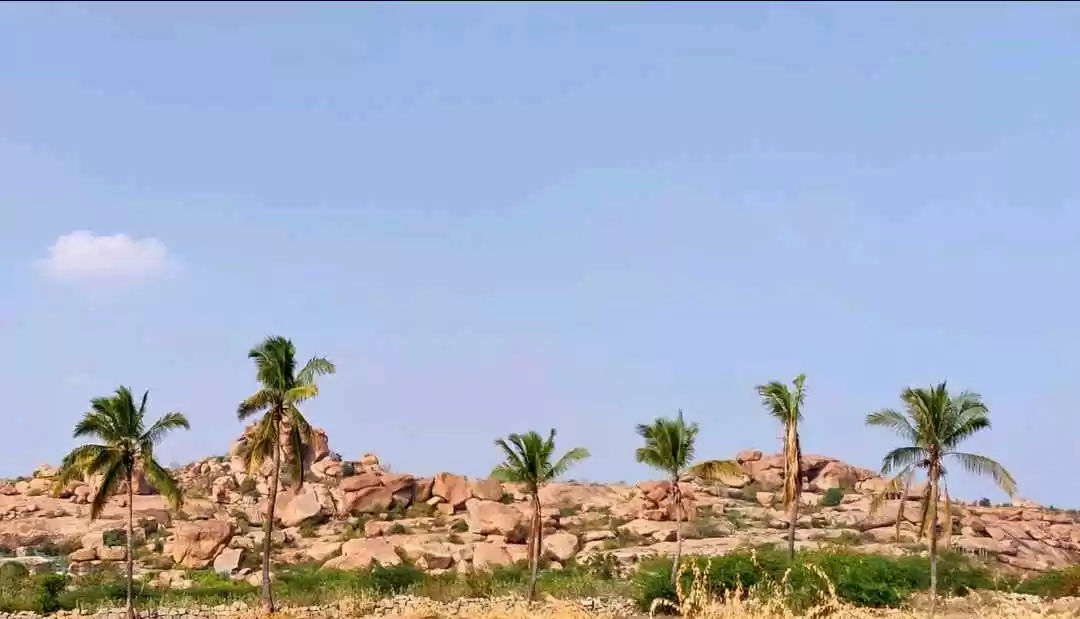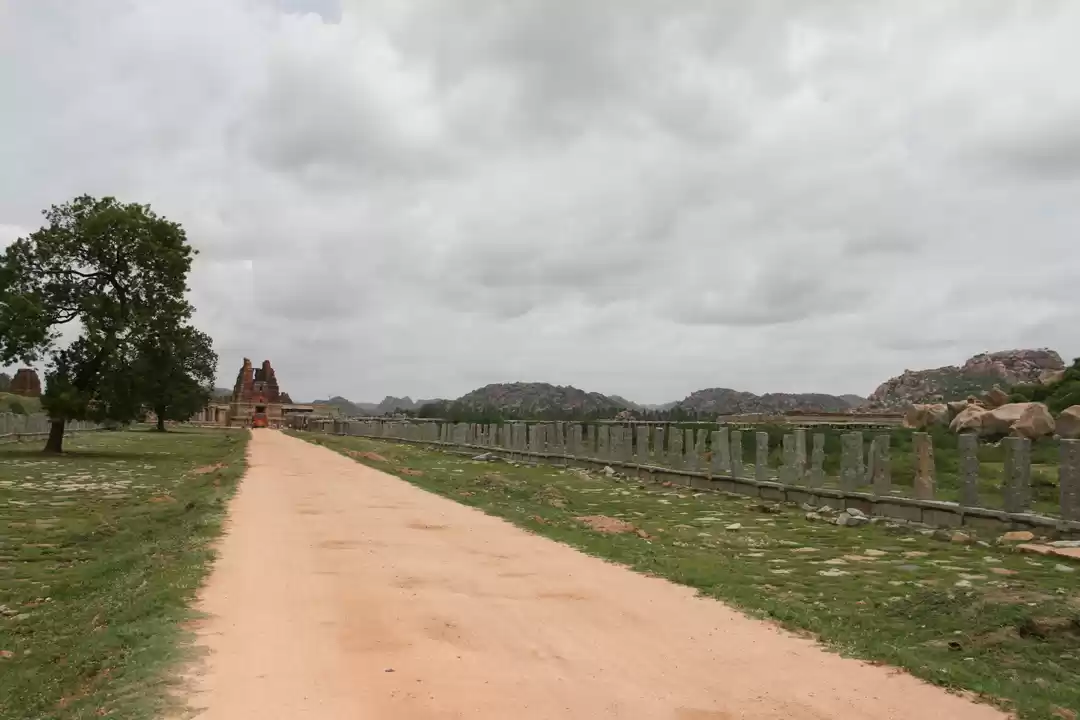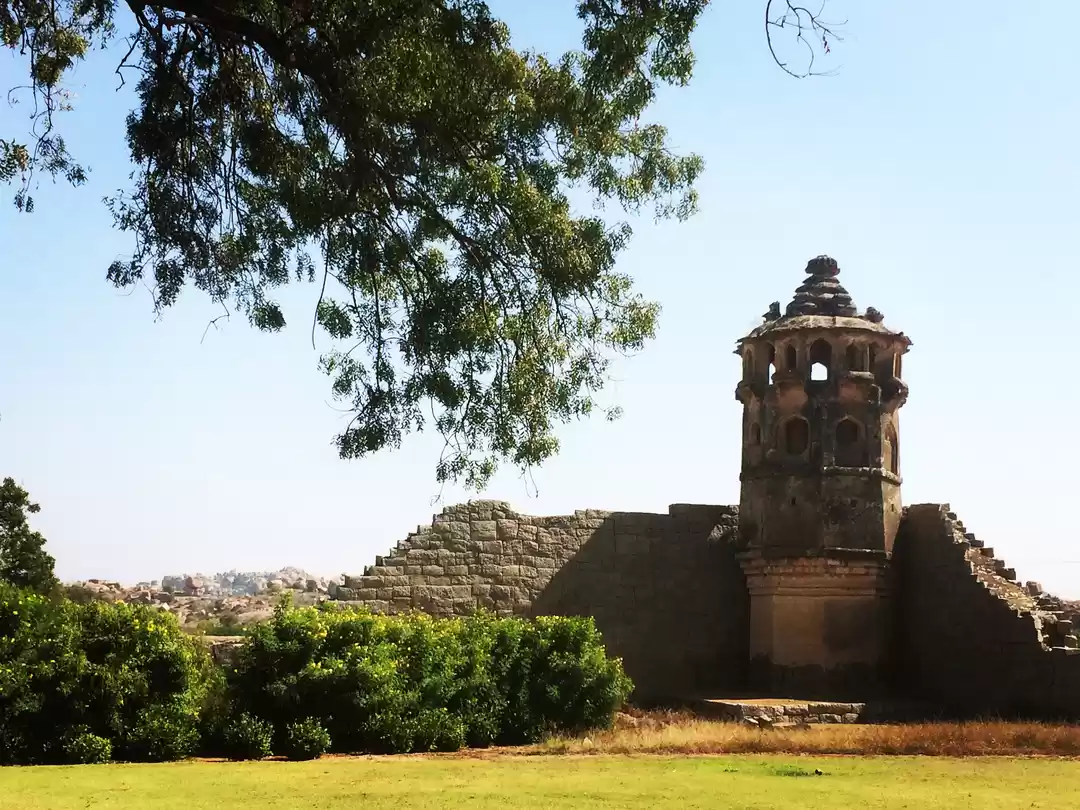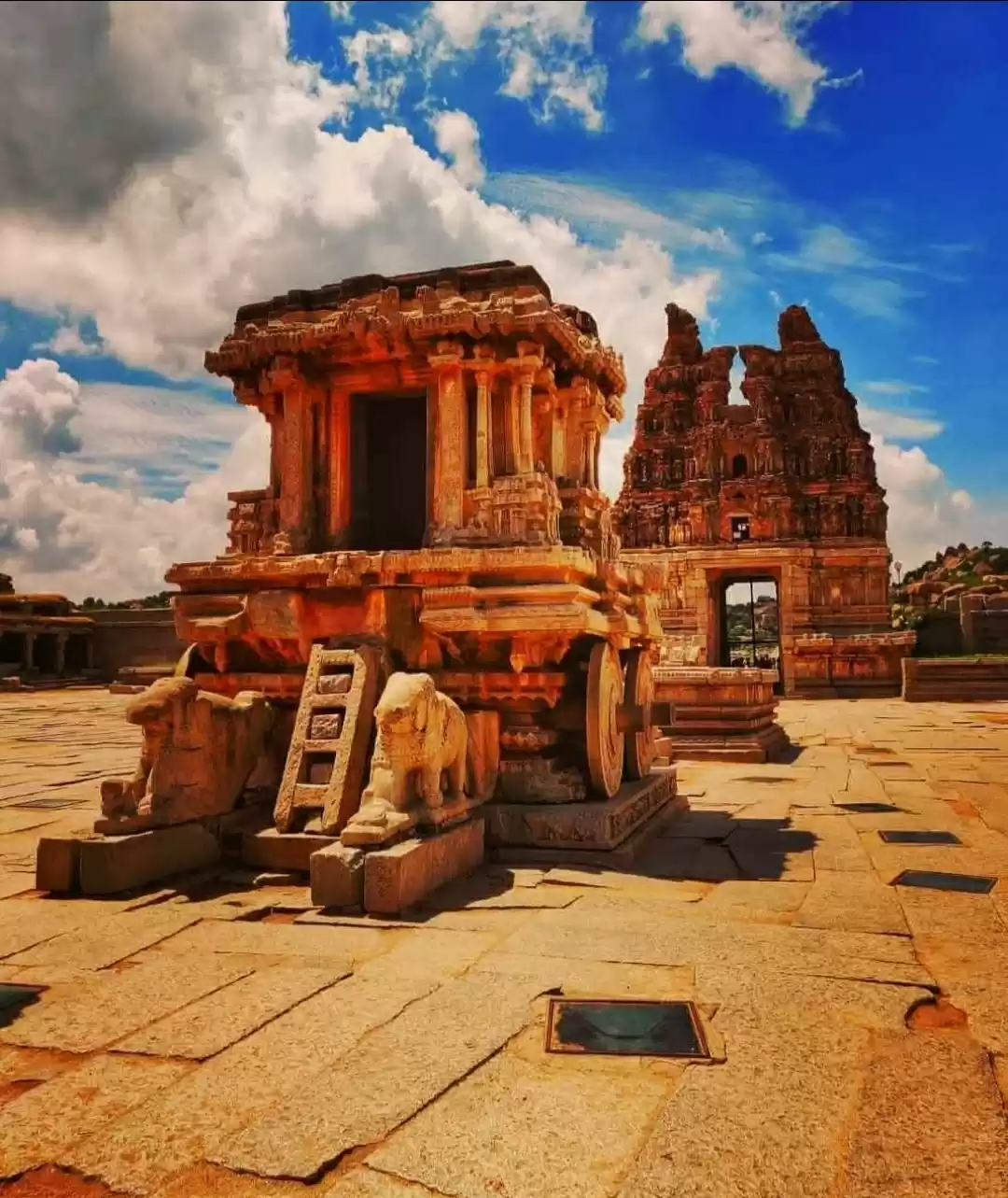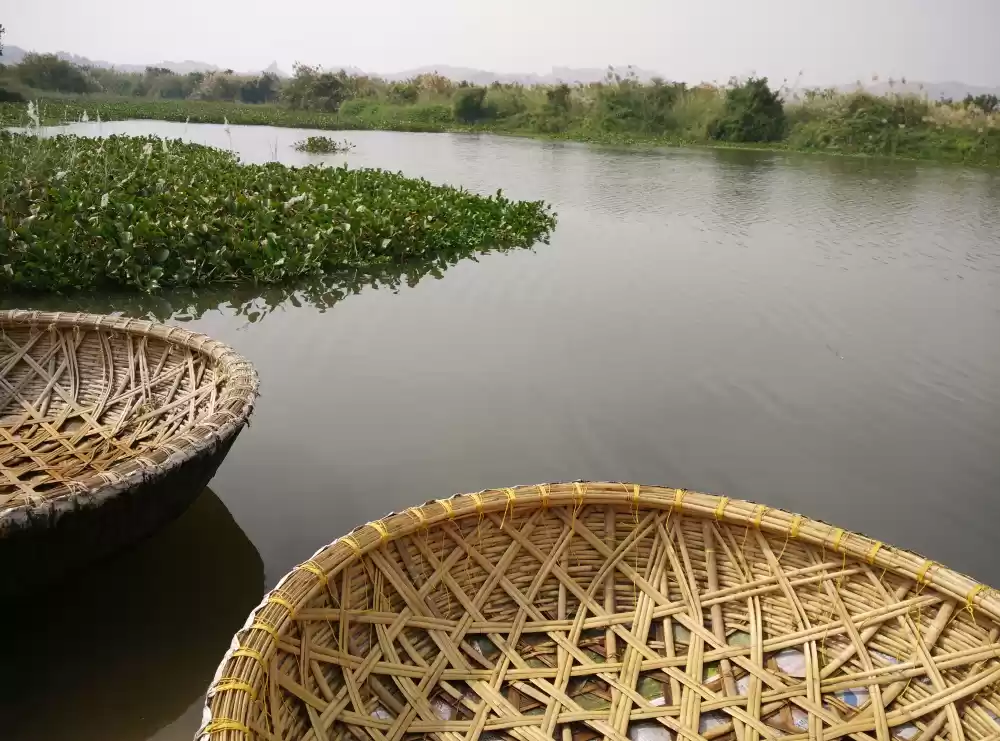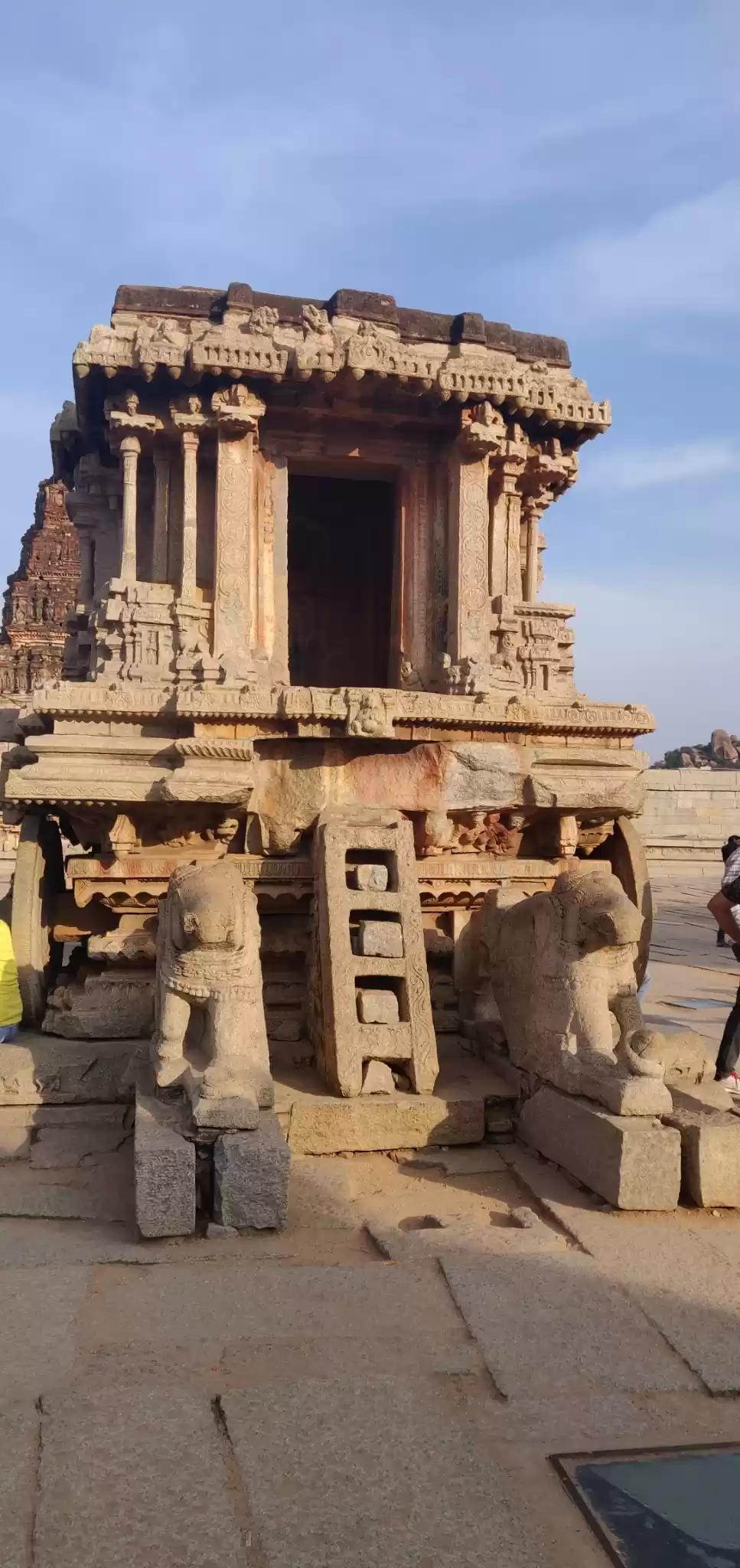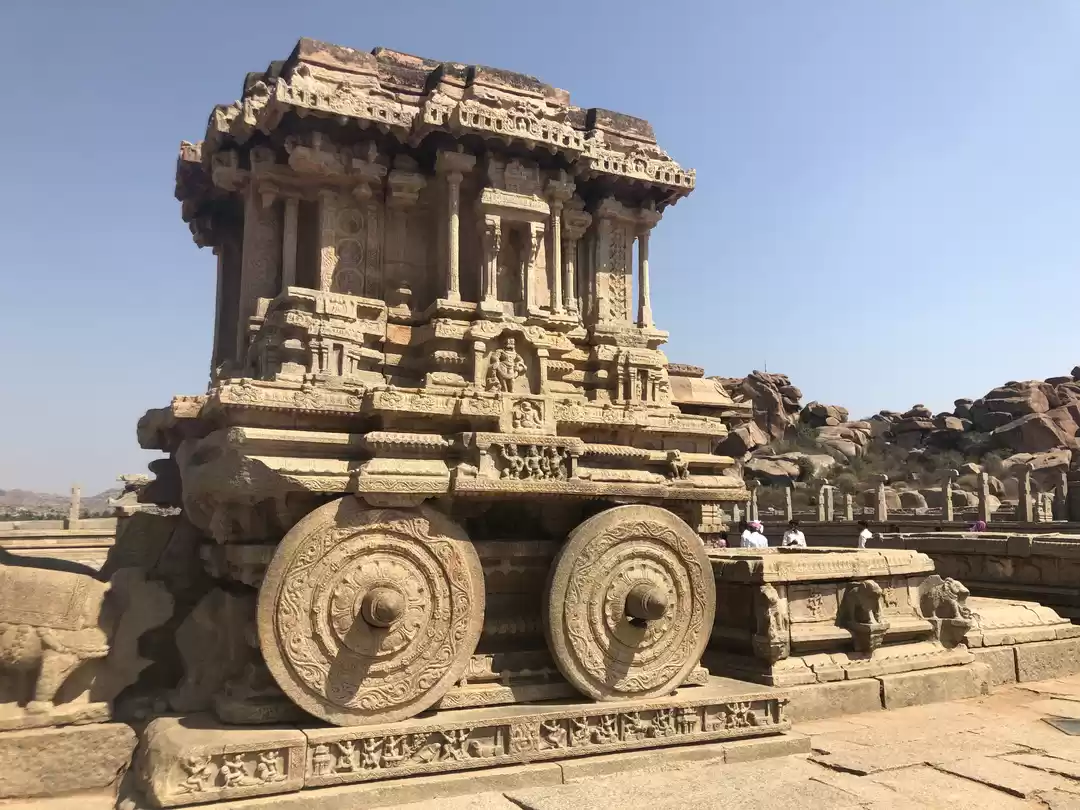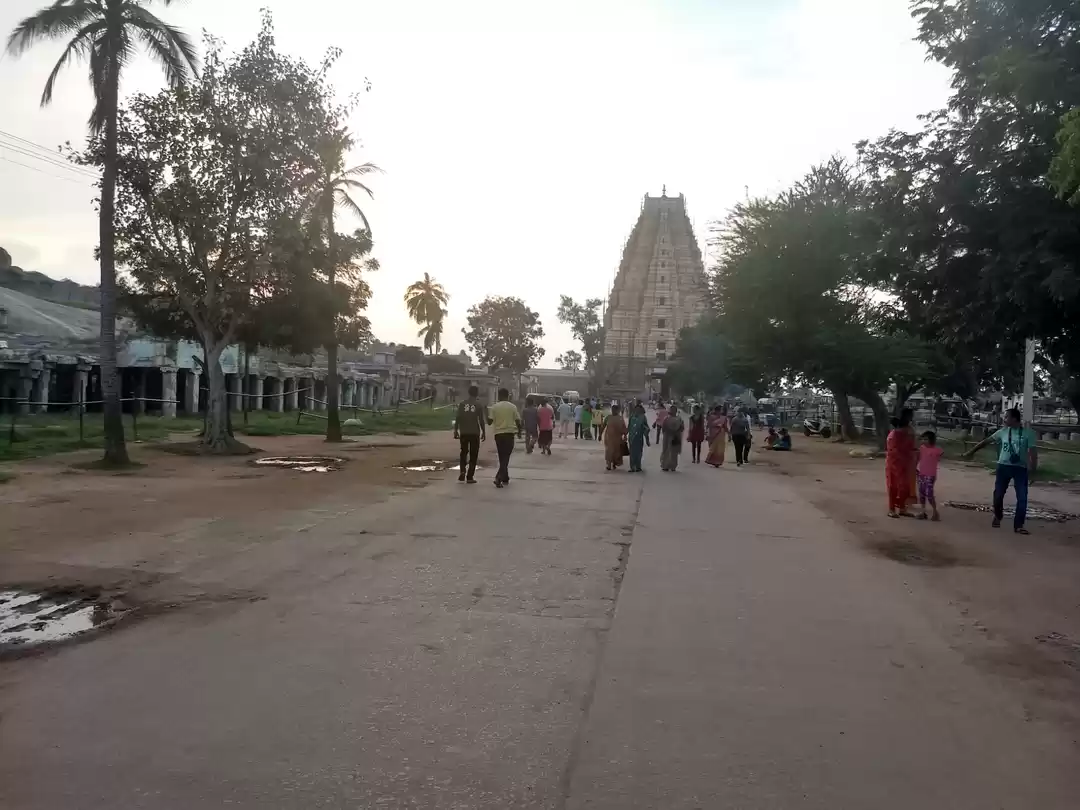
I will admit; Hampi was not the first place that popped in my head. I was beginning to take my solo travel seriously and so did a thorough research before landing on a decision. My research included surfing through internet for almost a month about the safe places for solo female travellers and well, Hampi figured in most of them! So, one day I booked a flight to Bangalore, India and a ticket for an onward journey to Hospet (the nearest rail-head for Hampi village). Admittedly, I was a bit nervous.
The most preferred route for reaching is an overnight journey on the Hampi express. I reached Hospet early in the morning and took a bus for Hampi village.
Hampi is a around 15 kilometers away from Hospet and I just knew I was about to reach the ruins of the Vijyanagar empire.

Hampi is basically divided into two areas; the main bazaar and Virupapura Gadde ( locally known as the Hippie island). Both the places are on either side of river Tungabhadra. I had made prior reservations for stay at both sides. It takes a boat ride (either motor boats or small bowl-shaped boats called coracles) to go across the river. I preferred the former.
Since I had not planned anything else ahead, I began exploring. I asked around about the places I can visit during the day and how. I had heard that travellers also explored Hampi on foot but I was not yet ready for that kind of adventure.
So, I rent a two-wheeler and rode all the way to Anegundi village, making a stop at the beautiful Sanapur lake.
The lake water and the boulders accompanied me pretty much throughout my ride to Anegundi.
I could have reached Anegundi taking a smaller and direct route but then, I wouldn't have had a chance to pass through the roads less taken.
Anegundi is a small village nearing Hampi and has few places to visit but a lot of places for tourists to put up. The roads were slightly damaged and since it was more or less my first time riding a two-wheeler, I decided to make just one brief stop at a local temple.
My guest house owner had told me to visit some more temples on my way back to Hampi from Anegundi, this time taking the direct route and not the one that goes through Sanapur. In this way, I could get a glimpse of both. The direct route had few temples enroute.
The monkey temple, also famous as a sunset point, is a temple dedicated to Lord Hanuman from Hindu tradition in India.
Caution: The top could be reached only after a flight of around 600 stairs.
A small tea-shop owner suggested to visit Pampa Sarovar (lake), the complex of which also housed two small temples. It is considered sacred according to Hindu theology.
The next stop was Durga temple, which was not exactly easy to reach. I had to ride ON the boulders to reach the foot of the temple. Walking was not an option as it seemed really far from the road. Admittedly, the ride was slippery and risky.
Tired, I returned to the guest house late in the evening.
I checked out the next morning and left for the Bazaar (market) area, across the river.
Once across the river, I waded and made my way through to the guest house where I had made arrangements to put up during the rest of my trip. The other side was thronged with people; tourists and locals. My first stop was Virupaksha temple, right in front of the Bazaar area.
The temple is dedicated to Lord Shiva (Hindu Theology) and is among the famous monuments of Hampi.
The other part of the temple leads up to the boulders (Hemkuta Hill) and gives an elevated view of Hampi.
An unplanned solo travel often gives rise to the question "what next". An hour later, I descended the boulders and the same question popped up. To my rescue came a dozen autorikshaw (three-wheeler rides) drivers who handed me a brochure and offered to take me around a dozen temple complexes at Rs. 400/-. Most were situated in Kamalapuram.
The next stop, strictly following the recently created itinerary, was the Lotus Mahal.
Next came the Ranga Temple complex.
The Royal Enclosure Hampi, next stop for the day, is spread over a few hundred kilometers and can be covered in an hour on foot.
My last and final stop for the day was the famous Vittala temple complex, spread over a vast area, comprising small temples and structures showcasing vivid architecture and last but not the least, the Tungabhadra river at the end. Another end of the complex gives way to the Matanga Hill near Hampi Bazar area.
A battery-operated vehicle plies to and from the entrance towards the main complex.
I ended the day with sunset at the Tungabhadra river.
The next day, I visited the Sanapur Lake again, this time to get a closer view.
Enroute are found the ruins of an aqueduct.
I had reserved the last day for Tungabhadra dam, located ahead of Hospet (also the railhead for Hampi), at a distance of thirty kilometers from Hampi. I covered the distance from the entrance of the dam complex (also housing a park) to the viewpoint on foot which was admittedly a bit tiring.
I wrapped my last evening in Hampi with sunset at Matanga Hill which can be accessed from Vittala temple complex as well as the main Hampi Bazaar area. I chose the latter since it was nearer to my abode for the time being.

